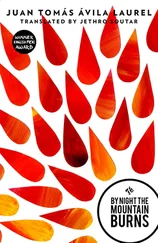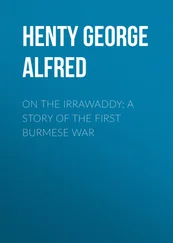Babur - The Bābur-nāma
Здесь есть возможность читать онлайн «Babur - The Bābur-nāma» — ознакомительный отрывок электронной книги совершенно бесплатно, а после прочтения отрывка купить полную версию. В некоторых случаях можно слушать аудио, скачать через торрент в формате fb2 и присутствует краткое содержание. Жанр: foreign_antique, foreign_prose, на английском языке. Описание произведения, (предисловие) а так же отзывы посетителей доступны на портале библиотеки ЛибКат.
- Название:The Bābur-nāma
- Автор:
- Жанр:
- Год:неизвестен
- ISBN:нет данных
- Рейтинг книги:4 / 5. Голосов: 1
-
Избранное:Добавить в избранное
- Отзывы:
-
Ваша оценка:
- 80
- 1
- 2
- 3
- 4
- 5
The Bābur-nāma: краткое содержание, описание и аннотация
Предлагаем к чтению аннотацию, описание, краткое содержание или предисловие (зависит от того, что написал сам автор книги «The Bābur-nāma»). Если вы не нашли необходимую информацию о книге — напишите в комментариях, мы постараемся отыскать её.
The Bābur-nāma — читать онлайн ознакомительный отрывок
Ниже представлен текст книги, разбитый по страницам. Система сохранения места последней прочитанной страницы, позволяет с удобством читать онлайн бесплатно книгу «The Bābur-nāma», без необходимости каждый раз заново искать на чём Вы остановились. Поставьте закладку, и сможете в любой момент перейти на страницу, на которой закончили чтение.
Интервал:
Закладка:
(2) The value of reproducing impersonal statements is seen by the following example, one of many similar: – When Babur and a body of men, making a long saddle-journey, halted for rest and refreshment by the road-side; “There was drinking,” he writes, but Erskine, “I drank”; what is likely being that all or all but a few shared the local vin du pays .
(3) The importance of observing Babur’s limits of vocabulary needs no stress, since any man of few words differs from any man of many. Measured by the Babur-nama standard, the diction of the Memoirs is redundant throughout, and frequently over-coloured. Of this a pertinent example is provided by a statement of which a minimum of seven occurrences forms my example, namely, that such or such a man whose life Babur sketches was vicious or a vicious person ( fisq , fāsiq ). Erskine once renders the word by “vicious” but elsewhere enlarges to “debauched, excess of sensual enjoyment, lascivious, libidinous, profligate, voluptuous”. The instances are scattered and certainly Erskine could not feel their collective effect, but even scattered, each does its ill-part in distorting the Memoirs portraiture of the man of the one word. 28
Postscript of Thanks
I take with gratitude the long-delayed opportunity of finishing my book to express the obligation I feel to the Council of the Royal Asiatic Society for allowing me to record in the Journal my Notes on the Turki Codices of the Babur-nama begun in 1900 and occasionally appearing till 1921. In minor convenience of work, to be able to gather those progressive notes together and review them, has been of value to me in noticeable matters, two of which are the finding and multiplying of the Haidarabad Codex, and the definite clearance of the confusion which had made the Bukhara (reputed) Babur-nama be mistaken for a reproduction of Babur’s true text.
Immeasurable indeed is the obligation laid on me by the happy community of interests which brought under our roof the translation of the biographies of Babur, Humayun, and Akbar. What this has meant to my own work may be surmised by those who know my husband’s wide reading in many tongues of East and West, his retentive memory and his generous communism in knowledge. One signal cause for gratitude to him from those caring for Baburiana, is that it was he made known the presence of the Haidarabad Codex in its home library (1899) and thus led to its preservation in facsimile.
It would be impracticable to enumerate all whose help I keep in grateful memory and realize as the fruit of the genial camaraderie of letters.
Annette S. Beveridge.Pitfold, Shottermill, Haslemere.
August, 1921.
SECTION I. FARGHĀNA
AH. – Oct. 12th 1493 to Oct. 2nd 1494 AD
In the name of God, the Merciful, the Compassionate.
In 29the month of Ramẓān of the year 899 (June 1494) and in the twelfth year of my age, 30I became ruler 31in the country of Farghāna.
( a. Description of Farghāna. )
Farghāna is situated in the fifth climate 32and at the limit of settled habitation. On the east it has Kāshghar; on the west, Samarkand; on the south, the mountains of the Badakhshān border; on the north, though in former times there must have been towns such as Ālmālīgh, Ālmātū and Yāngī which in books they write Tarāz, 33at the present time all is desolate, no settled population whatever remaining, because of the Mughūls and the Aūzbegs. 34
Farghāna is a small country, 35abounding in grain and fruits. It is girt round by mountains except on the west, i. e. towards Khujand and Samarkand, and in winter 36an enemy can enter only on that side.
The Saiḥūn River ( daryā ) commonly known as the Water of Khujand, comes into the country from the north-east, flows westward through it and after passing along the north of Khujand and the south of Fanākat, 37now known as Shāhrukhiya, turns directly north and goes to Turkistān. It does not join any sea 38but sinks into the sands, a considerable distance below [the town of] Turkistān.
Farghāna has seven separate townships, 39five on the south and two on the north of the Saiḥūn.
Of those on the south, one is Andijān. It has a central position and is the capital of the Farghāna country. It produces much grain, fruits in abundance, excellent grapes and melons. In the melon season, it is not customary to sell them out at the beds. 40Better than the Andijān nāshpātī , 41there is none. After Samarkand and Kesh, the fort 42of Andijān is the largest in Mawārā’u’n-nahr (Transoxiana). It has three gates. Its citadel ( ark ) is on its south side. Into it water goes by nine channels; out of it, it is strange that none comes at even a single place. 43Round the outer edge of the ditch 44runs a gravelled highway; the width of this highway divides the fort from the suburbs surrounding it.
Andijān has good hunting and fowling; its pheasants grow so surprisingly fat that rumour has it four people could not finish one they were eating with its stew. 45
Andijānīs are all Turks, not a man in town or bāzār but knows Turkī. The speech of the people is correct for the pen; hence the writings of Mīr ‘Alī-shīr Nawā’ī , 46though he was bred and grew up in Hīrī (Harāt), are one with their dialect. Good looks are common amongst them. The famous musician, Khwāja Yūsuf, was an Andijānī. 47The climate is malarious; in autumn people generally get fever. 48
Again, there is Aūsh (Ūsh), to the south-east, inclining to east, of Andijān and distant from it four yīghāch by road. 49It has a fine climate, an abundance of running waters 50and a most beautiful spring season. Many traditions have their rise in its excellencies. 51To the south-east of the walled town ( qūrghān ) lies a symmetrical mountain, known as the Barā Koh; 52on the top of this, Sl. Maḥmūd Khān built a retreat ( ḥajra ) and lower down, on its shoulder, I, in 902AH. (1496AD.) built another, having a porch. Though his lies the higher, mine is the better placed, the whole of the town and the suburbs being at its foot.
The Andijān torrent 53goes to Andijān after having traversed the suburbs of Aūsh. Orchards ( bāghāt ) 54lie along both its banks; all the Aūsh gardens ( bāghlār ) overlook it; their violets are very fine; they have running waters and in spring are most beautiful with the blossoming of many tulips and roses.
On the skirt of the Barā-koh is a mosque called the Jauza Masjid (Twin Mosque). 55Between this mosque and the town, a great main canal flows from the direction of the hill. Below the outer court of the mosque lies a shady and delightful clover-meadow where every passing traveller takes a rest. It is the joke of the ragamuffins of Aūsh to let out water from the canal 56on anyone happening to fall asleep in the meadow. A very beautiful stone, waved red and white 57was found in the Barā Koh in ‘Umar Shaikh Mīrzā’s latter days; of it are made knife handles, and clasps for belts and many other things. For climate and for pleasantness, no township in all Farghāna equals Aūsh.
Again there is Marghīnān; seven yīghāch 58by road to the west of Andijān, – a fine township full of good things. Its apricots ( aūrūk ) and pomegranates are most excellent. One sort of pomegranate, they call the Great Seed ( Dāna-i-kalān ); its sweetness has a little of the pleasant flavour of the small apricot ( zard-alū ) and it may be thought better than the Semnān pomegranate. Another kind of apricot ( aūrūk ) they dry after stoning it and putting back the kernel; 59they then call it subḥānī ; it is very palatable. The hunting and fowling of Marghīnān are good; āq kīyīk 60are had close by. Its people are Sārts, 61boxers, noisy and turbulent. Most of the noted bullies ( jangralār ) of Samarkand and Bukhārā are Marghīnānīs. The author of the Hidāyat 62was from Rashdān, one of the villages of Marghīnān.
Читать дальшеИнтервал:
Закладка:
Похожие книги на «The Bābur-nāma»
Представляем Вашему вниманию похожие книги на «The Bābur-nāma» списком для выбора. Мы отобрали схожую по названию и смыслу литературу в надежде предоставить читателям больше вариантов отыскать новые, интересные, ещё непрочитанные произведения.
Обсуждение, отзывы о книге «The Bābur-nāma» и просто собственные мнения читателей. Оставьте ваши комментарии, напишите, что Вы думаете о произведении, его смысле или главных героях. Укажите что конкретно понравилось, а что нет, и почему Вы так считаете.











